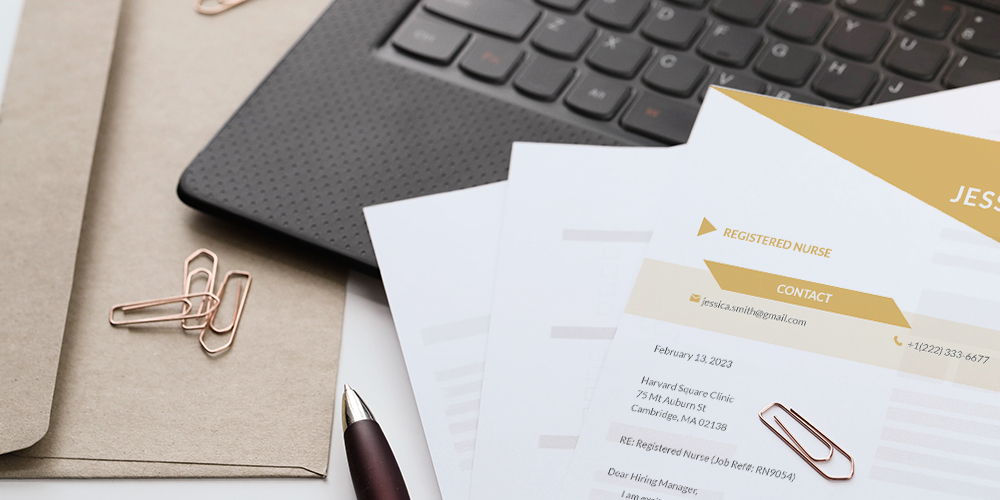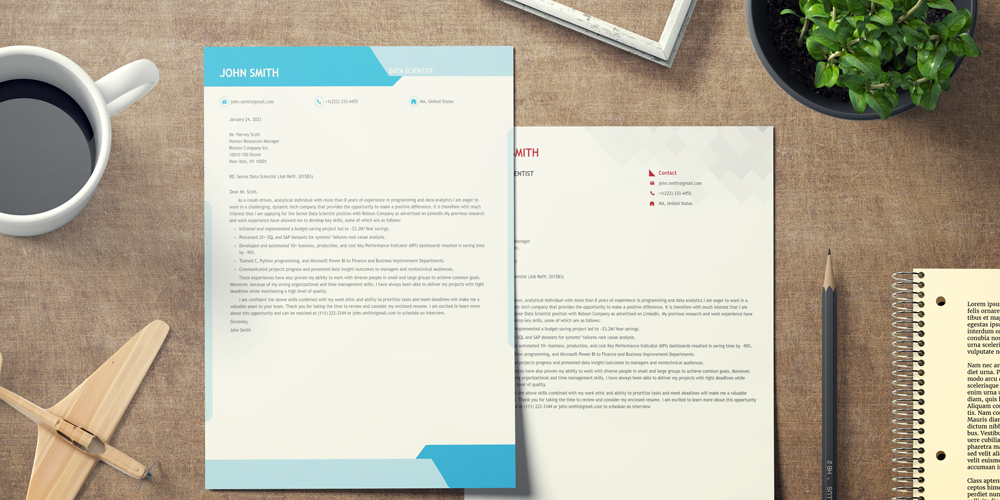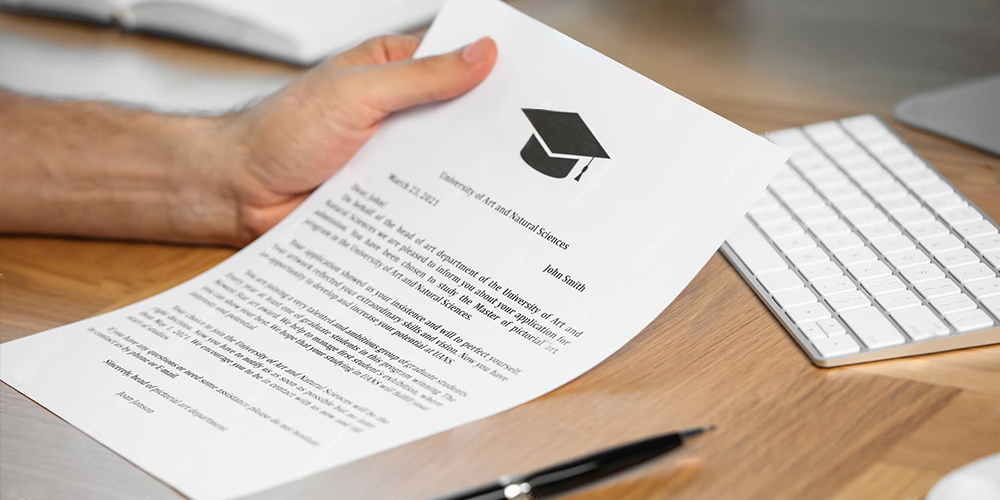
How to write a cover letter? First, you need to know what a cover letter actually is. A cover letter is one of the most important letters you would ever write. Hiring managers often use it to determine which of the qualified applicants will be invited for an interview. Your letter should not simply repeat information on your resume but rather communicate why you are interested in working with the company and how your education, experience, and attributes can benefit the company and contribute toward its goals.
When screening applications, employers want to know:
- Can you do the job? Do you have the education, knowledge, technical skills, experience, and aptitude needed to complete the work?
- Will you do the work? Are you interested in and motivated to complete daily tasks for the role? Do you understand what attributes are needed to do the work efficiently and effectively?
- Are you a possible fit? Do you share common values, work habits, and interests with the current team? Do your career goals align with what the company can offer?
In the following article, Radviser, your intelligent adviser will help you prepare a concise, persuasive cover letter based on what companies expect to see in the letter.
1. Research the Company and the Role
Before writing, it is important to understand the company’s business and hiring needs. This requires researching the company and the position:
- Company:
- Key products/services
- Projects – past, present, and future
- Reputation
- Vision, values, and strategic direction
- Culture
- Leadership team
- What sets them apart from competitors
- Position:
- Work environment
- Typical day
- Key challenges
- Deliverables (how success is likely to be measured)
- Who you will need to communicate with and how
- Equipment, tools, software used
- What attributes/soft skills are required
This information can typically be found through various resources, including a company website, news articles, business publications, an inventory of major projects list, LinkedIn, industry associations, the network of contacts, career fairs, employer information sessions, etc.
2. Identify the Key Technical and Soft Skill Competencies
To increase the likelihood of securing an interview, your cover letter needs to include the right information and align with the company’s hiring needs. Review the job posting for key technical and soft skills and highlight the top 5 to 10 skills or keywords most likely to be used to filter or screen applications.
If submitting an unsolicited application (no job posting), use LinkedIn to view profiles of people who hold/held positions similar to the one you are interested in to see what they list as responsibilities.

3. Identify Your Relevant Strengths
The third step of “how to write a cover letter” is to create a list of your most relevant skills and strengths, capturing what they are and where/how you have used them. To help build your list, ask yourself:
- What qualifies me for the role – education, experience, volunteer, and/or extracurricular activities?
- What soft/transferable skills do I have that will enable me to excel in the role?
Which one of my values, attributes, and work habits shows that I am a “fit” to the position’s requirements and company culture?
Compare your list to findings from Steps 1 and 2, i.e., “Research the Company and Role” and “Identify the Key Technical and Soft Skill Competencies,” to identify the most important information to include in your cover letter.
Order information from most to least relevant, using the qualifications section of the job posting as a guide, and then turn the bullet points into full sentence/paragraph structure to write the body.
4. Write Your First Draft

Once you determine the details, you can write your first draft. To do so, it is necessary to be familiar with the structure of cover letters.
Cover Letter Structure
1. Header
The header of your cover letter includes your contact information. In addition to your phone number and email address, many candidates like to include links to their LinkedIn profiles, personal websites, or online portfolios. You should consider using the same header as the first page of your resume.
2. Date
The date you send the letter or submit the application.
3. Recipient Info
This is optional but you can include the recipient’s information at the top of the letter.
4. Subject Line
The subject line specifies the job title and reference number, if applicable.
5. Greeting
To make your cover letter eye-catching, address your cover letter to a specific person whenever possible. If the hiring manager's name is not stated in the posting, do some research on LinkedIn and the company's website to identify the right person, or contact the company to inquire about the person responsible for hiring in the department you want to work. Some companies will tell you, some will not, but it is worth the effort and can help you stand out from the competition.
If you do not have a contact name, there are several options for the Salutation:
- Dear Hiring Manager,
- Dear Hiring Committee,
6. Opening Paragraph
The Opening Paragraph informs the reader about the purpose of your communication and entices the recruiter to continue reading. Specify the position you are applying for, and indicate where/how you found out about it. If someone referred you, mention it here – provide their full name, and context if applicable. You may also include a sentence about what motivates you to want to work for the company or what/how you will contribute if hired – to be effective, this sentence must be specific to the company's hiring needs.
7. Body Paragraph
The Body Paragraph contains your "marketing pitch," where you highlight how your qualifications and personal attributes will enable you to excel in the role. It shows that you understand what it takes to succeed by communicating why you are the best candidate for the opportunity, your relevant technical and transferable skills, and why/how you fit the company/position/location. These paragraphs should complement your resume rather than repeat the information found there. This paragraph generally starts with your education/degree and status. If your body paragraph is lengthy, you can separate it into two smaller paragraphs.
8. Closing Paragraph
In the Closing Paragraph, summarize the contents of your letter and reiterate your interest in the position and the value you will bring to the company if you are hired. Keep your tone professional but do not be afraid to express enthusiasm for the role. Make sure to tell them how they can reach you, and thank them for their time and consideration. If sending an unsolicited application, it is recommended you let them know that you will follow up on your email by a set date – then ensure to do so. Do not forget to note your availability for employment in your letter.
Last, keep the Complimentary Close simple:
- Sincerely
- Respectfully
- Regards
If you are submitting a hard copy, make sure to sign it. When submitting an online application, typing your first and last name after the complimentary close is enough.

5. Check Your Cover Letter Formatting
Formatting your cover letter properly is an important step for presenting a clean, professional document. Here are four formatting areas to consider when reviewing your cover letter:
1. Length
Your cover letter should never be longer than one page.
2. Text Alignment
Your text should be aligned to the left. Never centre or justify the text.
3. Margins
Use standard letter margins of at least 1 inch. If your letter is too long, avoid widening the margins to fit the text. Instead, edit the content down to the most relevant content.
4. Fonts
Do not be tempted by "fun" fonts, even if you apply for a creative position. Regardless of industry, select a basic, easy-to-read font. Keep the text at a 10-, 11-, or 12-point size. Acceptable cover letter fonts include but are not limited to Times New Roman, Avenir, Calibri, Sans Serif, and Arial.
6. Proofread and Edit Carefully
Editing your content and format is critical. In a competitive job market, a single error or typo in your cover letter or resume could cause your application to be screened out. Do not rely on spelling or grammar-checking software to catch errors. Instead, read your cover letter out loud; it is often easier to hear than to see grammatical errors.
- Pay attention to word choice, punctuation, run-on sentences, and capitalization of proper nouns.
- Check contact and company names for accuracy.
- Make sure you have not left details from a previous application anywhere in the letter.

Final Tips for Writing A Cover Letter
Now that we have covered the basics of writing a cover letter let's discuss the information that should and should never appear in your letter.
Do's
- Do study the job posting. This will allow you to focus the content of your letter on the skills and experience that matter most to the employer.
- Do add data and metrics. To pack a punch in your cover letter, add numbers to show employers the impact your work has had on past employers.
- Do stay positive about your past employers. A cover letter should always be professional and upbeat. Complaining about a current or past employer could be a red flag to hiring managers. So, focus on the positives and do not point out the negatives.
- Do focus on the employer's needs. The content of your cover letter should focus on your skills and experience and what you can do to add value to the company. Adding information about your professional goals could give the employer the impression that the role you are applying for is merely a stepping stone.
Don'ts
- Do not add personal information. Including details like your age, marital status, religion, or political beliefs can invite unconscious bias into the hiring process and is never recommended.
- Do not discuss salary. Unless you have been asked specifically to state your desired salary, do not mention money.
- Do not embellish or overstate qualifications. Everything in your cover letter should match your resume and be true. You must be able to speak to everything on your application at an interview. Also, untruths or exaggerations will almost always be discovered during a background check step, so keep your information honest.
- Do not copy and paste content from job postings; paraphrase instead, e.g., do not say "I am an excellent player" – instead, identify what type of team you would likely be part of if hired, and then write a statement to showcase your ability to fit in with the team.

Final Words
Believe it or not, we assure you that cover letters do get read. In fact, some hiring managers consider cover letters the most important part of an application. Cover letters allow you to highlight why you will stand out above all the other candidates. To make sure your cover letters are in amazing shape, we have brought a great list of tips and advice on how to write a cover letter.
In addition to this subject, you can find more about the application materials by going through our Library. We help you keep your information updated. Check it out to see for yourself.






